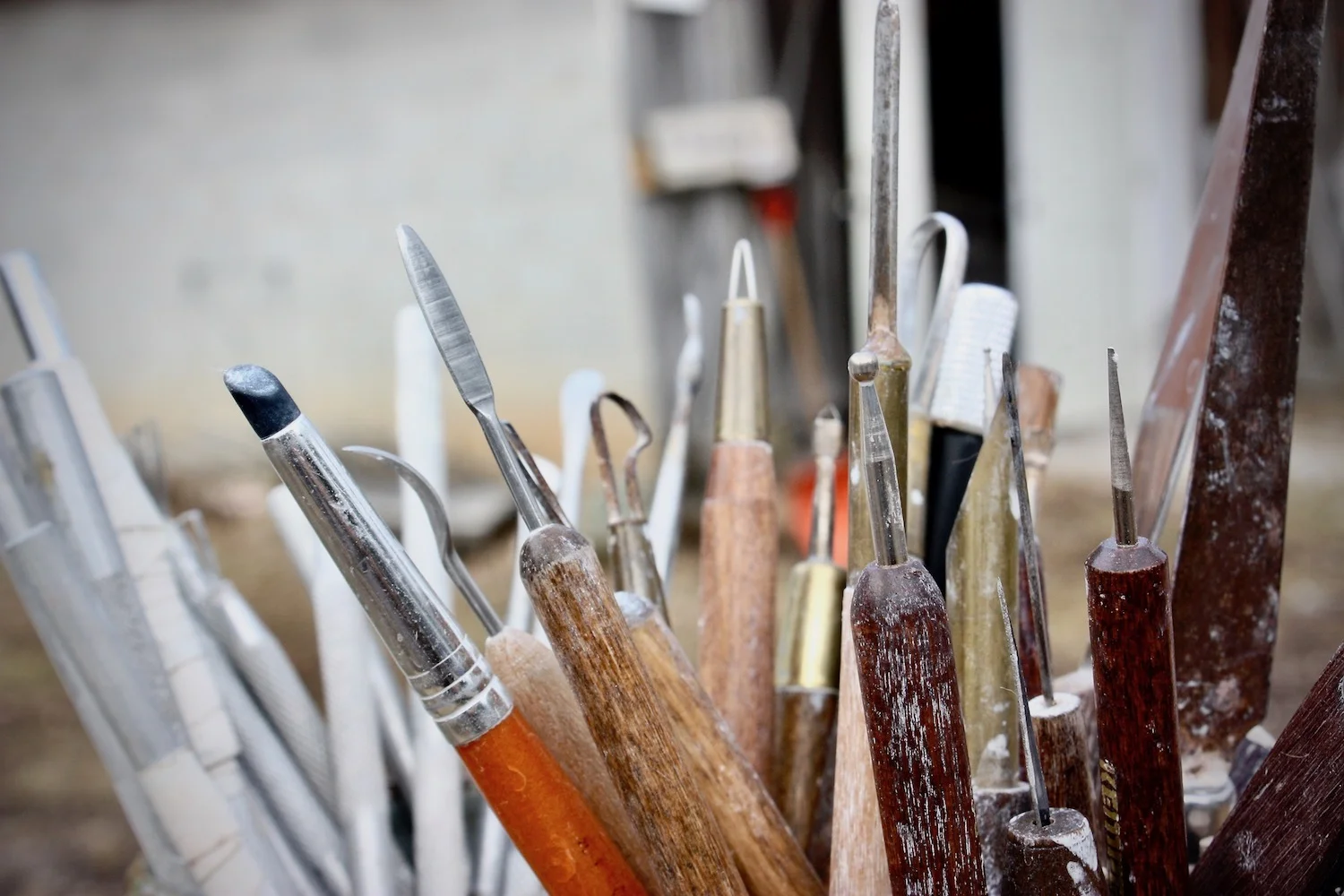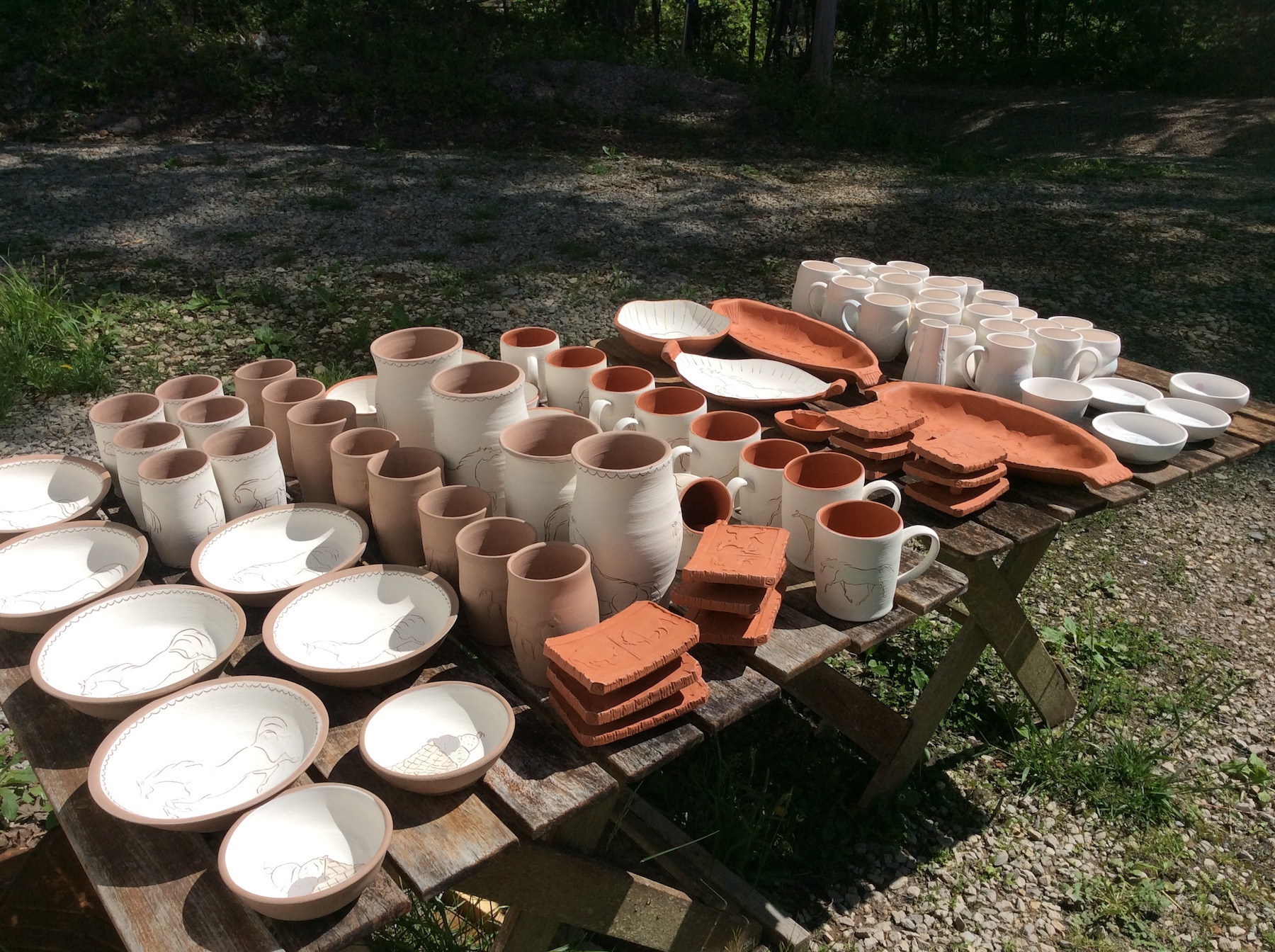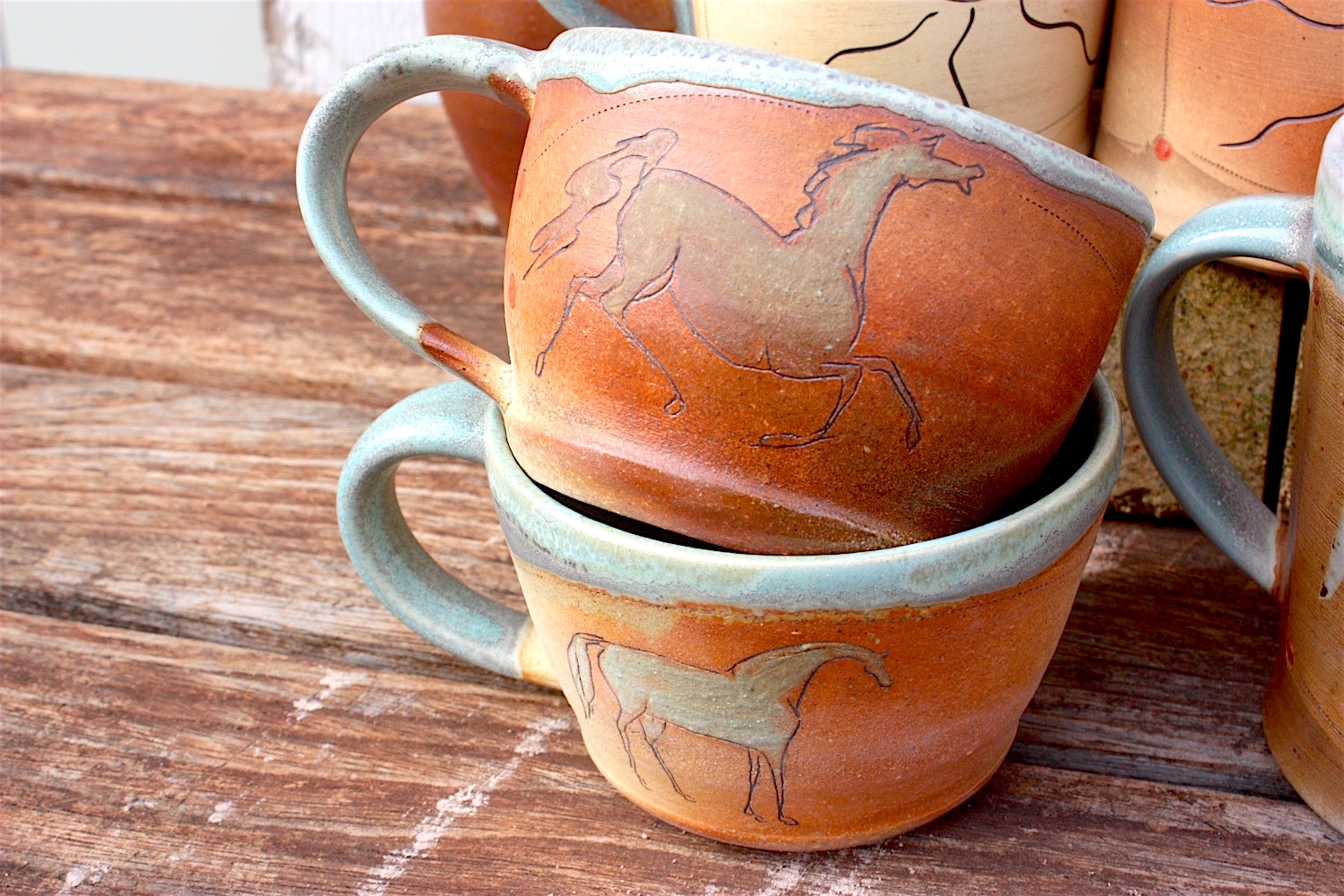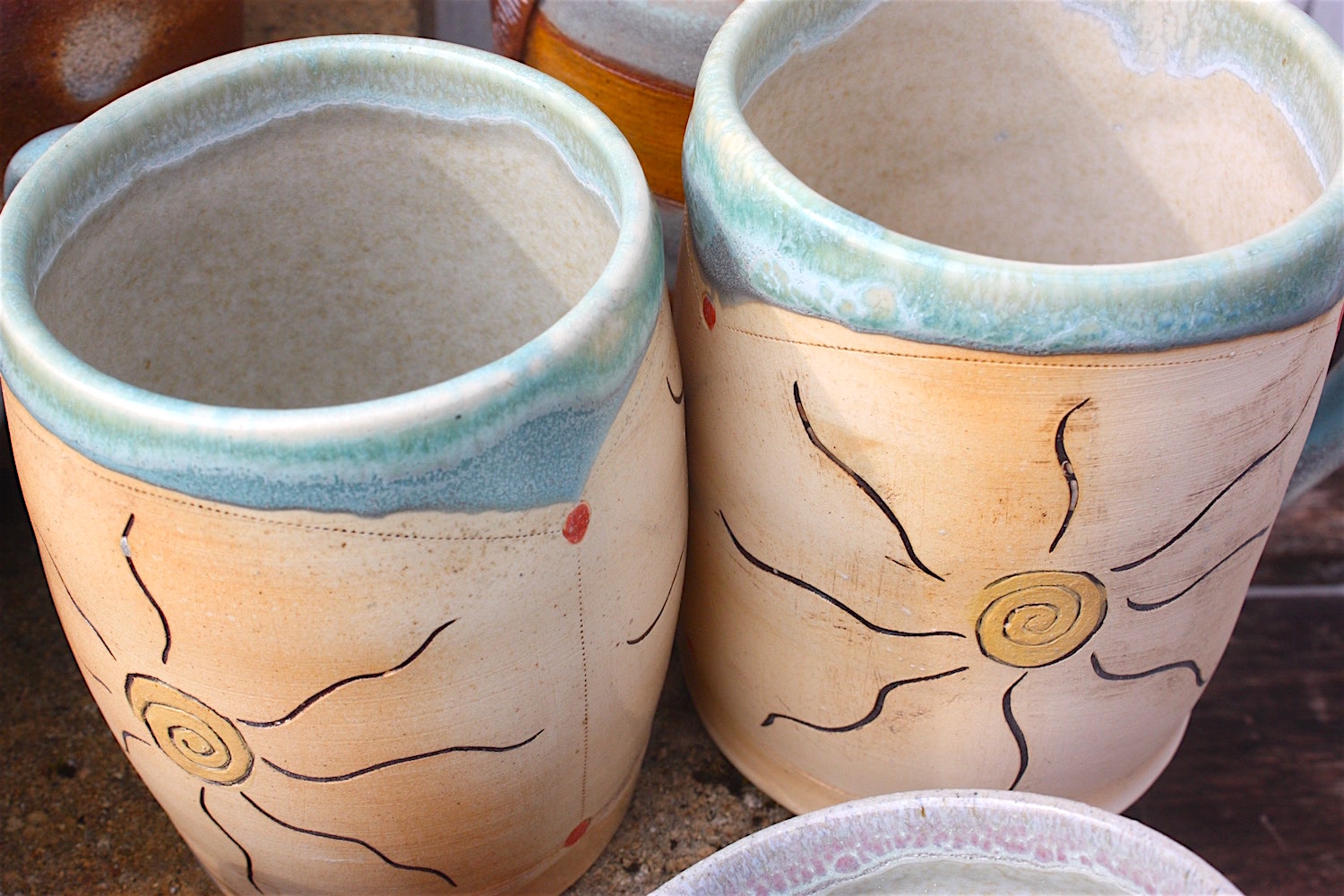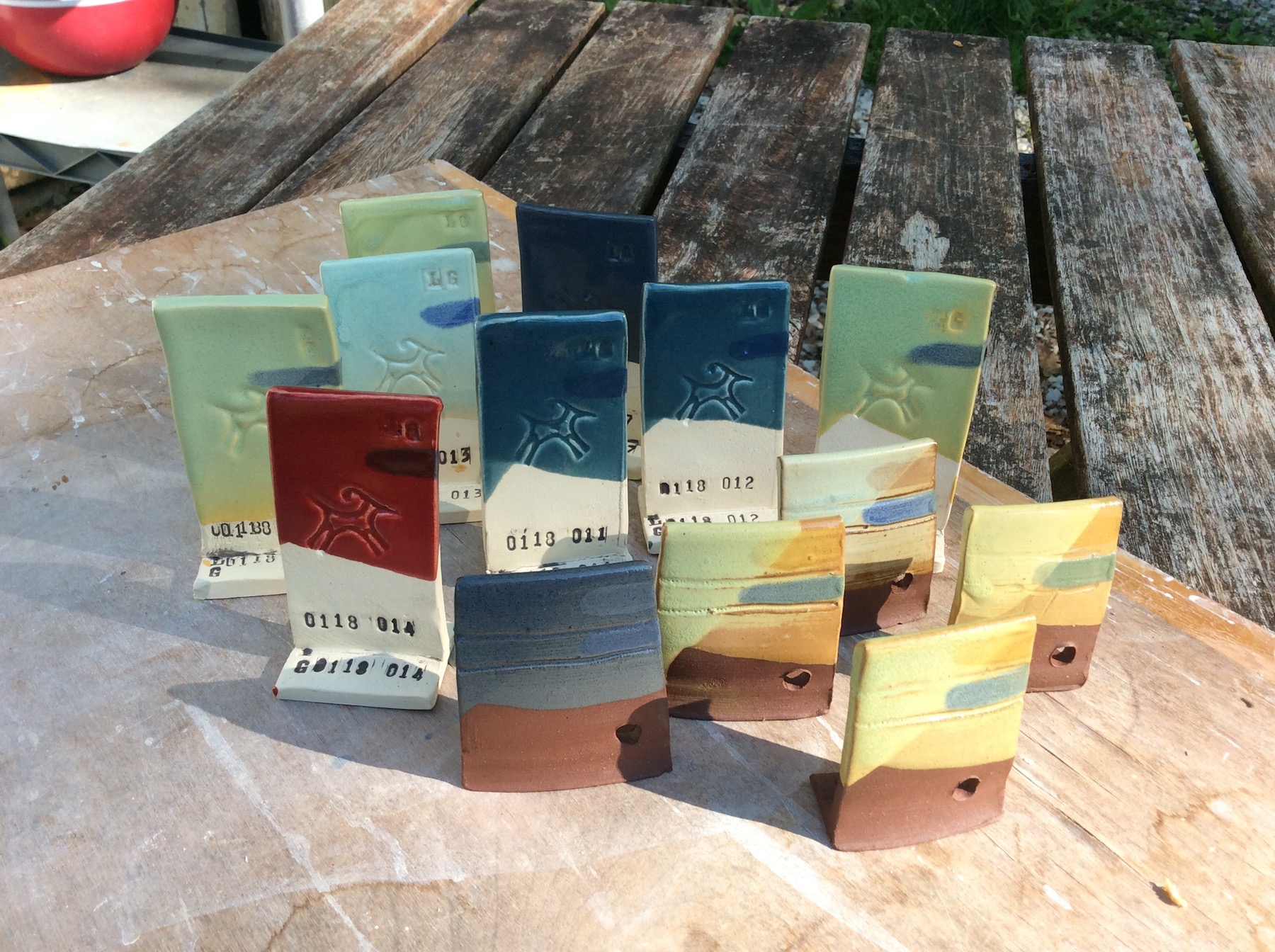Work Process
Making pottery is a process, a journey. I'm all about the journey. When you think about it, taking a lump of clay, essentially dirt, the earth under our feet, and working an undefined shape into something not just pleasing to the eye but also a functioning piece of work is a fascinating process. Most people think of the wheel when they think of the act of making pottery but the time on the wheel is a small part of what goes into a pot. Pottery making is physical and whole body, from handling 25 lb blocks of clay, to wedging, to throwing or hand-building–making lids, knobs, spouts, feet and handles, to moving the pots around and around, wheel to shelf to table to shelf to glaze bucket to shelf to kiln and out again to the shelf. Every shape must be considered, handles attached, feet trimmed, rims smoothed, surfaces considered, carved, sanded, even negative space is given consideration. Making pottery requires a bit of exercise and attention to one's physical space.
I work primarily in stoneware clay. Stoneware clay is a clay that fires to maturity or vitrification at a mid to high-range temperature, generally 2232ºF or higher. Vitrification is a point where the clay particles have essentially fused together creating a body that has shrunk to its maximum point mostly water-tight. Clay-firing temperatures are often referred to in the ceramics industry by cone numbers signifying a specific heat-work temperature and state. I work at cone 6 in my electric-fired work. When I make work for the wood-fueled soda kiln, my pots are fired to much higher temperatures, Cone 9-12. Occasionally, if I'm feeling brave, I'll try a porcelain piece but me and porcelain have yet to come to terms.
Most of my pottery is a combination of wheel thrown and hand built sections. Most of it is also fired in an electric kiln. Right now I'm making heavy use of carving my illustrative drawings and designs into the surface and employing a mishima technique where you fill the lines with a black colored slip then wipe it back to reveal the drawing. I then brush in sections with colored slips. Pots go from a wet state to a bone-dry state – the pots' most fragile state, to the kiln for the first firing. This is called bisqueing. Bisqueware makes the pottery stronger and easier to handle without breaking. It also makes the surface somewhat porous allowing good surface coverage of the glaze. The second firing, glaze-firing, is much hotter. If all goes well, the pot comes out fully matured and vitrified, ready to be used. A typical turn-around for a kiln load of work for me is approximately 4-7 weeks. Things like the number of pieces made, how involved the pieces are (the drawings, the assemblage, handles, trimming) and air humidity which can speed up or slow down the drying time, all contribute to the length of the journey a pot makes form start to finish.
Electric-fired work is pretty straight-forward. Firings take any where from 8-14 hours. Cool-down from 2232ºF is about another 6-12 hours. Wood-fired work is a whole other ball of wax. In addition to the physical work that is making pottery, preparations for a wood-fired kiln must be made before the pots can be fired. Wood must be gathered, cut, dried and stacked, ready to be used. Shelves must be sanded and repaired, kiln-washed with a solution to prevent the pots from sticking to the shelves. Wadding that keep the pots from adhering to the shelves must be made. And then the firing! Wood-firings can take anywhere from 8 hours up to 7 or more days of continuous stoking reaching temperatures from Cone 8 up to cone 12. Cool downs can take an additional 1-4 days. There's a lot to it. I find it fascinating. I'll add a another link that explains just the process of wood-firing, it's that involved.

